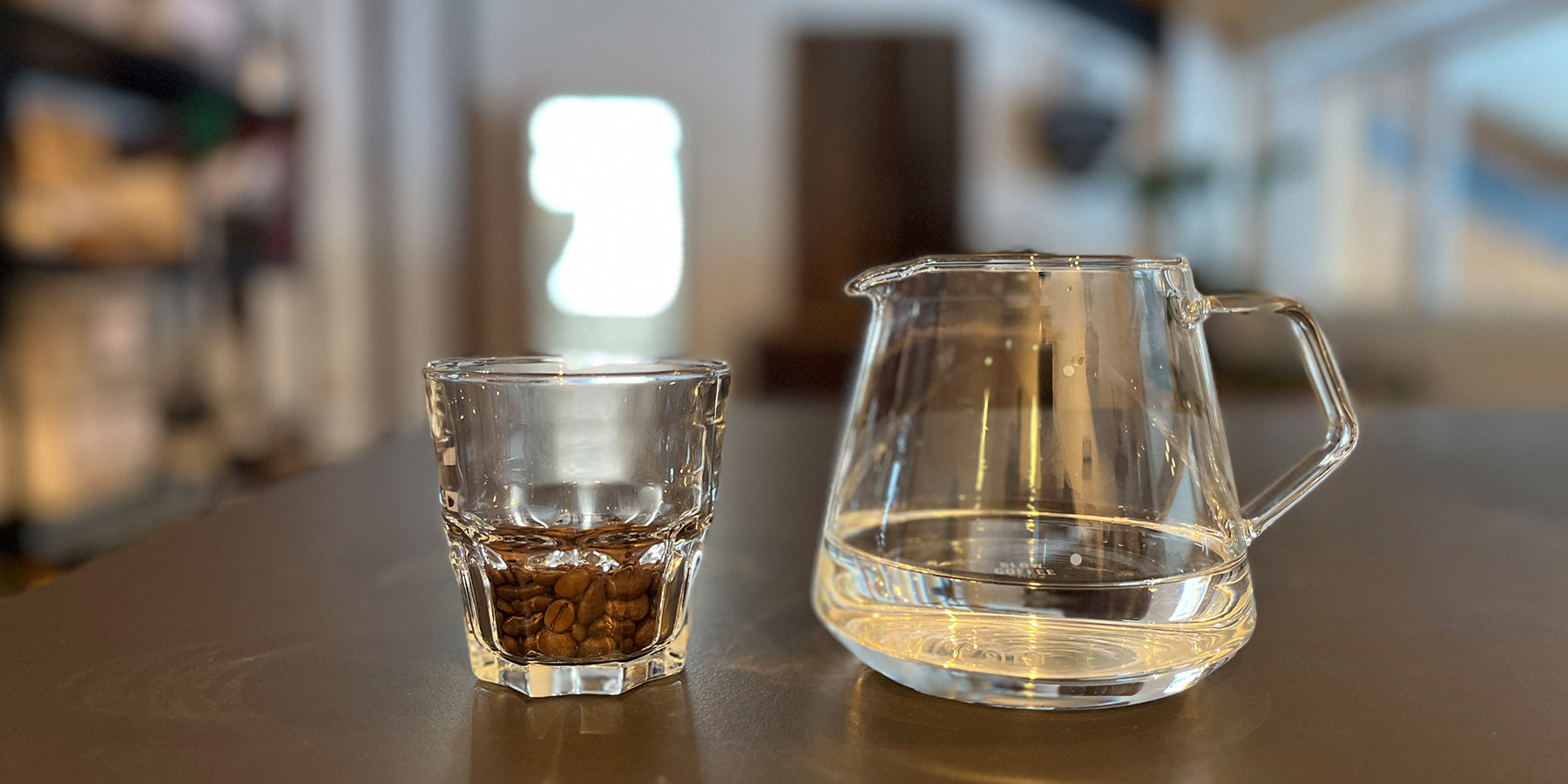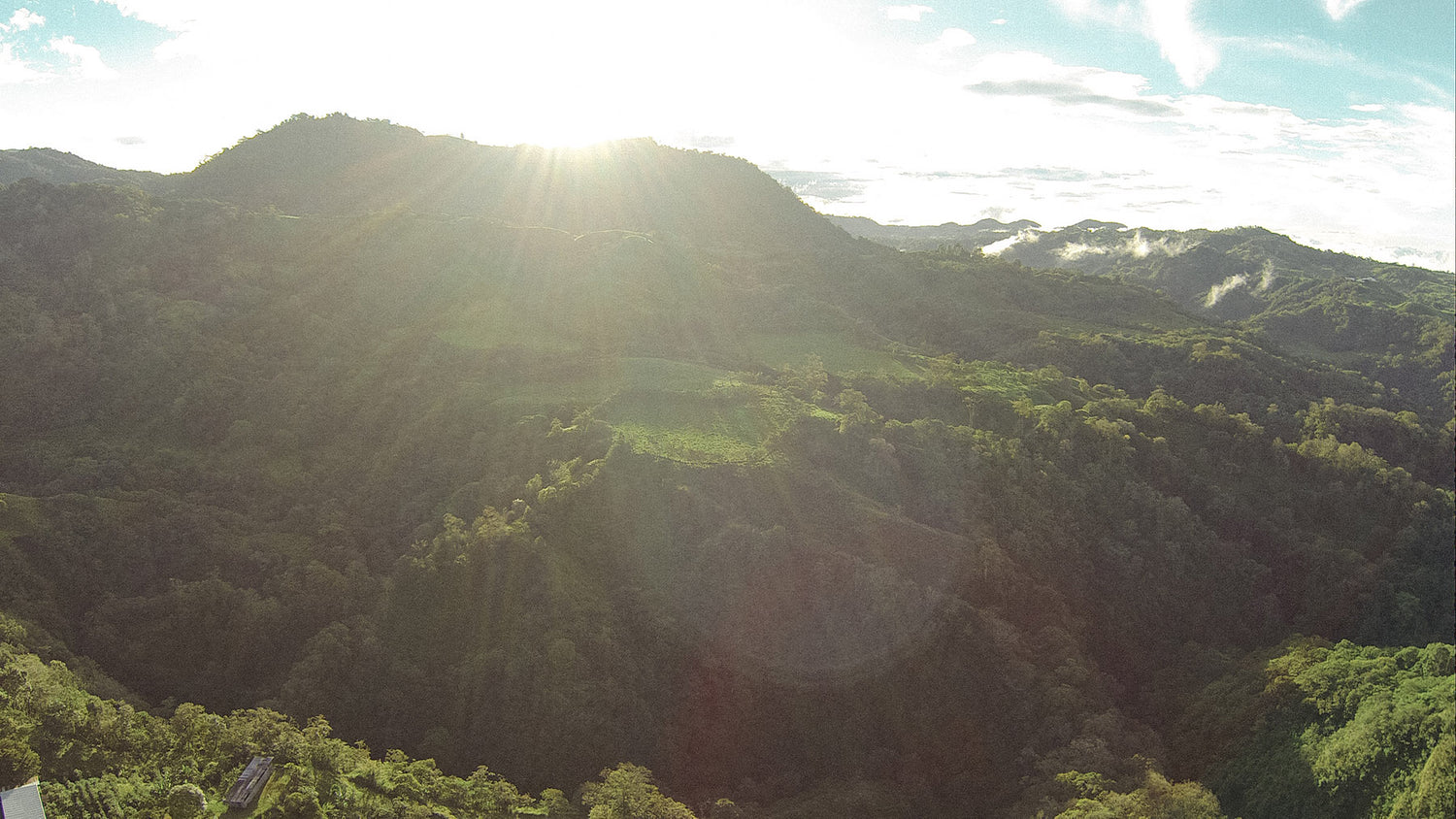It's all about the mix. This applies to every area of life. This also applies to your coffee or espresso. Here the mix is called the professional brew ratio. There are many theories about this, even more practice and a bit of mathematics. We'll take a look at all of this so that you don't have to do the mental math.
What is the brew ratio?
For a good cup of coffee you don't need anything more than coffee beans and hot water. Basically yes, but there are a few variables you should consider. These include the particle size after grinding the coffee, the temperature of the water, the quality of the water and of course the beans and also the time for which the ground coffee and water come into contact. And above all there is the ratio between the amount of coffee and the amount of water. The so-called brew ratio. There is not ONE brew ratio , but it changes depending on the preparation method, coffee, machine used and so on.

Why is the brew ratio important?
The answer is simple: if the water-coffee ratio is not right, even the highest quality coffee can taste bad. Short example calculations:
- Ratio 1 to 2: five heaped tablespoons of coffee powder (approx. 50 g) and 100 ml of water produce an abnormally strong brew that no one can drink.
- Ratio 1 to 20: five heaped tablespoons of coffee powder (again about 50 g) and 1,000 ml of water will produce a drinkable coffee, but it will be quite thin.
As you can see, the two are not ideal. So you need to get the brew ratio right. A coffee-water ratio of 1:15 to 1:18 (for filter methods) is often described as ideal.
Brew Ratio – what do I do with it?
A brew ratio of 1:15 simply means that 15 times as much water is used for one part coffee. One part corresponds to one gram or one milliliter. So with a brew ratio of 1:15 you need around 270 milliliters of water for 18 grams of coffee. This, for example, is a recipe for filter coffee recommended by our barista and Wildkaffee Austria managing director, Martin Wölfl. We generally recommend a brew ratio of 1:15 or 1:16 for filter coffee. At least to start with, when you've got a new coffee. And then of course you can experiment and see how the taste changes if you adjust the brew ratio slightly. Ultimately, the only thing that counts for the optimal brew ratio is your taste.

How important is this parameter?
Yes, quite important, as already shown in the example calculation above.
The brew ratio is actually the most important variable when it comes to influencing the taste of your coffee drink. The brew ratio even affects preparation aspects, and these in turn affect the brewing ratio. So grind, brewing time, etc. The cup profile of your coffee depends on the type, quality and quantity of coffee as well as the quality and quantity of water used. Conversely, this means that the brew ratio is not only one of the most important, but also one of the most volatile factors in making coffee . Basically, you can (and should) adjust the brew ratio every time you change a parameter - such as water, type of coffee, roast, grind. In fact, the brew ratio is the linchpin of every single cup of coffee.
Full Immersion vs Pour Over
If we look at the different ways of making filter coffee, for example, we can see straight away that there are big differences: the full immersion method such as the French press or the pour over method such as with the hand filter or Chemex. With the first method, the coffee and water work together for much longer, around 4 to 5 minutes. And with hand filter brewing, the process is over after around 2.5 minutes. With an espresso, it takes even less time: here it is only around 30 seconds. So not only the amount of water, but also the contact time between water and coffee has an impact on the brew ratio, since longer contact between the two raw materials means that more aromas and ingredients are extracted.
When do I need to change the brew ratio?
Always. But especially whenever you change something. The brewing method, the coffee, the grind, etc. Then you can start with the basic recipe and use more coffee or less water and see how the result - the taste - changes. The easiest way to show this is with the three Italian classics: Ristretto, Espresso, Lungo. See for yourself by making the same coffee three times but with different brewing ratios: a 1:1 shot, a 1:2 shot and a 1:3 shot. To be able to compare all three under "laboratory conditions", you should keep the extraction time the same by adjusting the grind accordingly - namely at +/- 25 seconds.
The classics
Ristretto, espresso, lungo are the three Italian classics. And they are actually all the same drink, just with a different brew ratio. The single ristretto is made with 8 to 10 grams of ground coffee and yields 8 to 10 milliliters of drink. This corresponds to a brew ratio of 1:1. The single lungo still has 8 to 10 g of ground coffee, but 24 to 30 g of finished coffee (1:3). And the classic espresso, with a brew ratio of 1:2, yields 16 to 20 milliliters from 8 to 10 g of powder. These are the classic recipes.
Our recommendation for espresso (a double shot): 16 to 20 g of coffee yields 35 to 60 milliliters. So here you have a brew ratio of 1:2.2 to 1:3. And I'll say it again, it always depends on the bean, the grind, the machine, the water and your own taste. So try it out and find your very own brew ratio.

Rules of thumb and measuring tools
The best thing to do is to get yourself a precision scale. These will help you not only when measuring the coffee, but also when brewing it, if you are making coffee with a hand filter, for example. I'll be honest, it doesn't have to be a scale specially designed for brewing coffee, but these things are good. They measure weight, brewing time, milliliters and some even the flow rate. Of course, you can also weigh things with a tablespoon. And even though we would advise against this because coffee beans are different sizes and so on, you can fit around five grams of beans into a level tablespoon. Be careful: with coffee powder, you get almost ten grams of coffee in a tablespoon. In the case of tablespoons with powder, you can use one spoonful per 120 milliliters of water. But weighing is more accurate!
Various preparations
Portafilter espresso: 1:2 to 1:3, this is something you can experiment with a lot.
Portafilter Ristretto: 1:1 to 1:1.5
Portafilter Lungo: 1:3 to 1:4
Filter coffee: 1:15 or 1:16
Aeropress: like filter coffee
French Press: 1:16 to 1:18
Chemex: similar to filter coffee, possibly up to 1:18
Stovetop pot: the pot actually determines the brew ratio: water up to the valve and powder up to the edge of the sieve without pressing.
Fully automatic: the machine does this itself, but you can set it in the menu. The ratios of espresso and coffee apply here
Cold Brew: something between 1:6 and 1:10

Conclusion
So, as mentioned somewhere in the middle section, the brew ratio is absolutely important for your taste experience. Less water to more coffee and your drink will be more intense. More water to less coffee and your drink will be thinner and smoother. Within certain limits, you can and should experiment to find the brew ratio that suits you. At the same time, however, you should also keep in mind that both extremes can ruin your coffee. Either it will be unbearably intense or you will just drink water. The task of experimenting with the brew ratio is particularly important with new coffee beans. And always remember that if you change things like the grind, amount of water, amount of coffee, brewing time, etc., then only change one parameter and taste the drink. Then you will know straight away how this parameter affects the taste and you will know which parameter it was. If you change the amount of water and grind, for example, you cannot find out what caused the change in taste. With that in mind, #staywild and happy experimenting!


